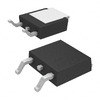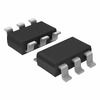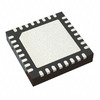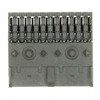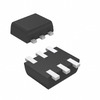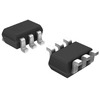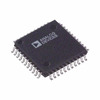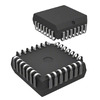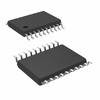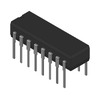330 Ohm Resistor and Color Codes
In electronics, resistors help control the flow of current in circuits. The 330 ohm resistor, recognized by its color bands, is a common and reliable component in many devices. This article covers how to identify the 330 ohm resistor by its color bands, its standards, and its uses. It also explains how the color bands on 4, 5, and 6-band resistors show resistance, tolerance, and temperature effects. It also discusses why tolerance is important and how it impacts circuit performance, helping user to choose the right resistor for their needs and understand how it affects electronics.
Catalog
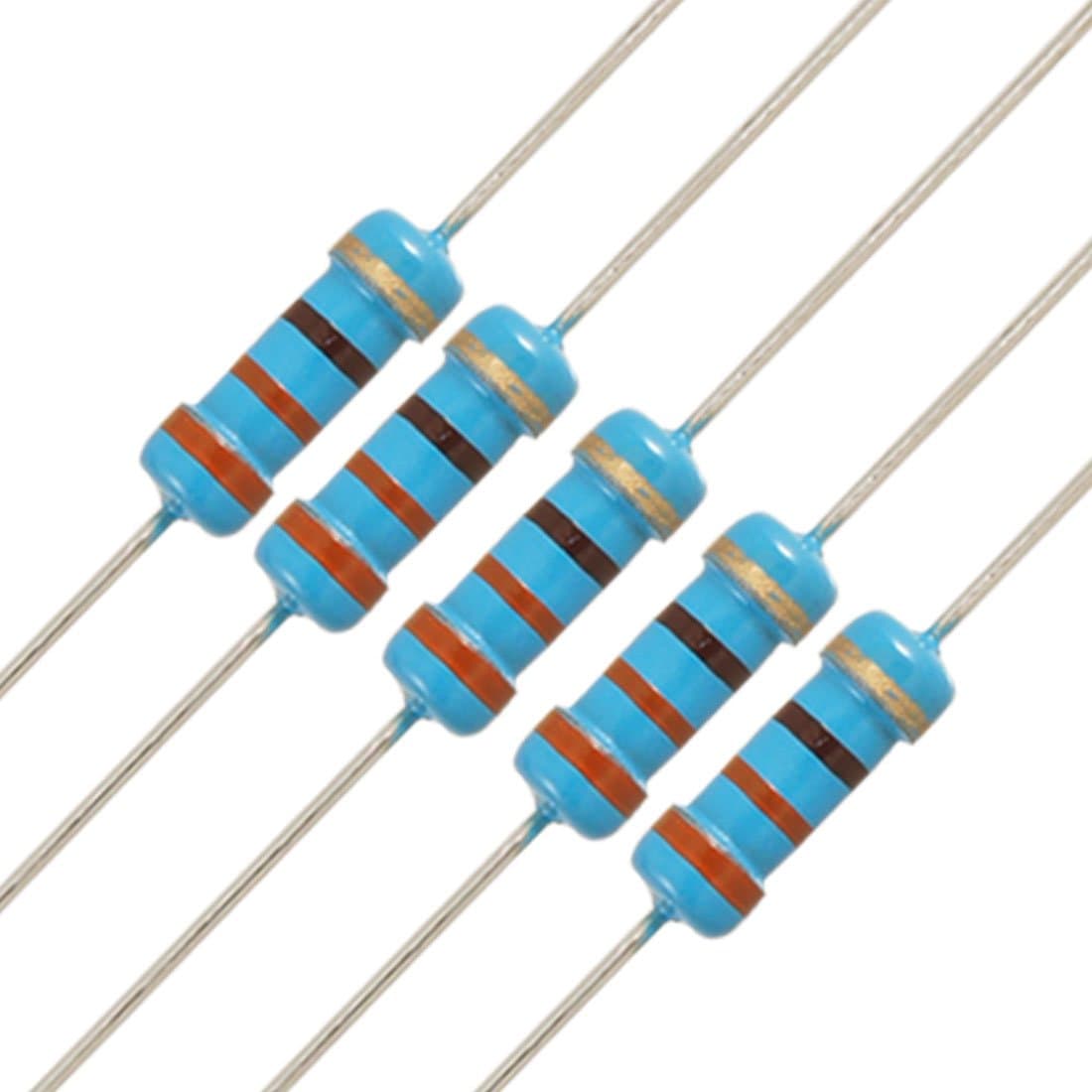
Figure 1: 330 Ohm Resistor
Purpose of a 330 Ohm Resistor in a Circuit
The main purpose of a 330-ohm resistor in a circuit is to control the amount of electric current. This helps protect delicate components, like LEDs, from receiving too much current that could cause damage or lead to malfunction. The resistor also helps regulate the brightness of LEDs, a main feature in applications for precise light control. By limiting current to safe levels, the resistor ensures longer-lasting components and enhances the reliability of devices across different technologies.
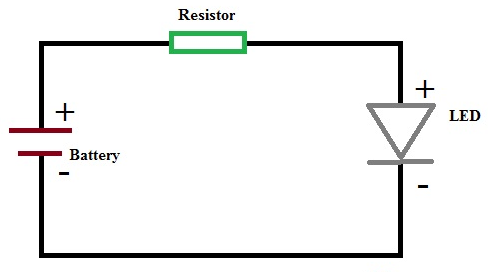
Figure 2: Circuit Diagram with Resistor
In transistor circuits, resistors are required for setting up the starting conditions for the transistor that is called "biasing." This makes sure the transistor works in the right range. For example, a 330-ohm resistor can be used to control the voltage and current going to the transistor's base, helping it work in the correct area. The resistor adjusts things so the transistor operates properly and stays stable.
In digital circuits, with microcontrollers, pull-up and pull-down resistors make sure input pins have a clear high or low signal. Without these resistors, the signal might be unclear, causing mistakes. A pull-up resistor connects the pin to a positive voltage, making it read "high" when no signal is present. A pull-down resistor connects the pin to ground, keeping it at "low" when no signal is there. A 330-ohm resistor is used in these setups to keep the pin stays stable and avoids random behavior.
The 330 Ohm Resistor Color Code
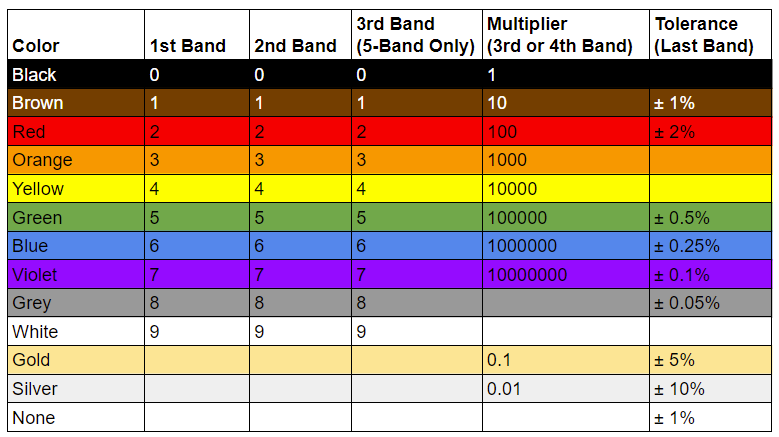
Figure 3: 330 Ohm Resistor Color Code
A 330 Ohm resistor can be identified by its color bands: either Orange-Orange-Brown-Gold or Orange-Orange-Black-Black-Gold.
The color code for a 330-ohm resistor consists of four bands:
The first orange band stands for the number 3, the first digit of the resistor's value.
The second orange band also represents 3, the second digit.
The third band is brown, it means you multiply the previous digits (33) by 10. This gives you the total resistance of 330 ohms.
The fourth band can be either gold or silver. Gold shows a tolerance of ±5%, while silver indicates a tolerance of ±10%.
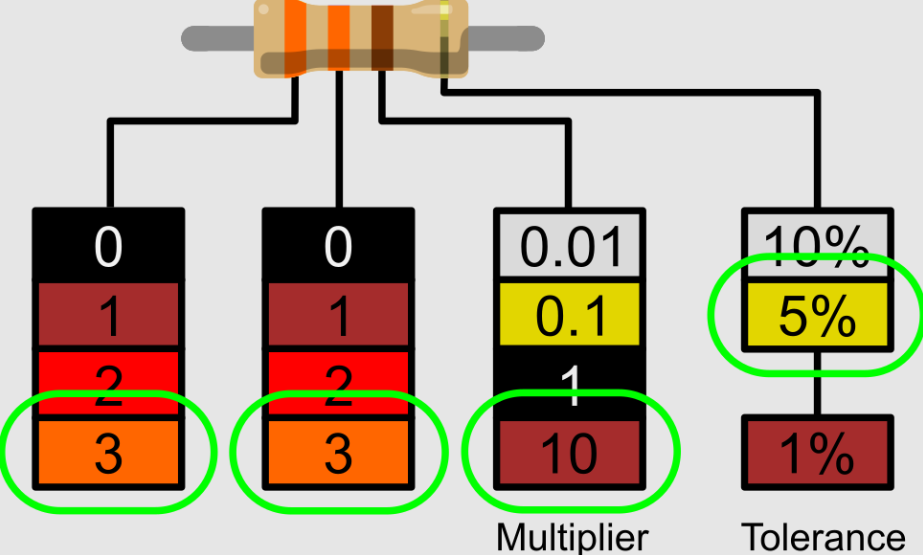
Figure 4: 330 Ohm Resistor Color Code
330 Ohm Resistors in the E-Series Standards
A 330-ohm resistor used in electronics for its reliability and precision. It belongs to the E-series, a system of standard resistor values that simplify component selection. The series includes groups like E12 and E96 representing how much the actual resistance can vary.
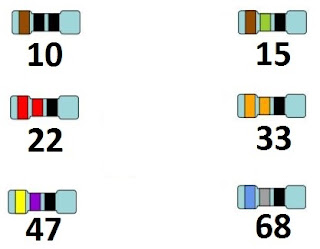
Figure 5: E6 Resistor Value
The 330-ohm resistor's adherence to E-series standards ensures consistent performance, even under varying conditions like temperature or voltage changes. It's used in tasks ranging from limiting current to an LED to more complex systems like signal processing or power control. Its inclusion in the E-series also makes it widely available, reducing costs and production.
|
E-Series |
Tolerance (%) |
Applications |
Available in
330 Ohm |
|
E6 |
±20 |
General electronics |
√ |
|
E12 |
±10 |
Consumer electronics |
√ |
|
E24 |
±5 |
Precision devices |
× |
|
E48 |
±2 |
Communication equipment |
× |
|
E96 |
±1 |
Industrial electronics |
× |
|
E192 |
±0.5 or ±0.25 |
Measurement instruments |
× |
The 330 Ohm Resistor Color Bands
The first two bands show the significant digits, the third is a multiplier, and the fourth is the tolerance. In resistors with six bands, a final one shows the temperature coefficient, telling you how much the resistance might change with temperature.

Figure 6: 330 Ohm Resistor Color Bands
|
Band Number |
Function |
Color |
Value |
|
1 |
1st Digit |
Orange |
3 |
|
2 |
2nd Digit |
Orange |
3 |
|
3 |
Multiplier |
Brown |
x 10 |
|
4 |
Tolerance |
Gold (or silver) |
± 5% (± 10% for silver) |
|
Total Value: 330 ± 5% Ω |
|||
The Impact of Tolerance in 330 Ohm Resistors
The tolerance of a resistor shows how much its actual resistance can differ from the value written on it and predicting how it will work in a circuit. For a 330 ohm resistor, the tolerance is ±5% or ±10%. This means a 330 ohm resistor might have a resistance between 313.5 ohms and 346.5 ohms with a ±5% tolerance, or between 297 ohms and 363 ohms with a ±10% tolerance.
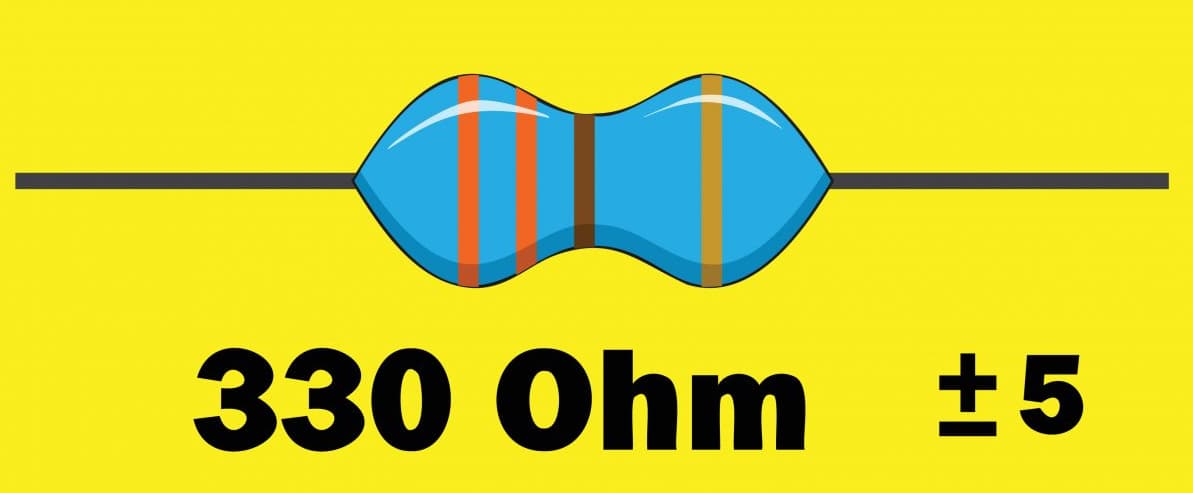
Figure 7: 330 Ohm Resistor Tolerance
While these changes may seem small, they can affect how a circuit works. In some circuits, small differences in resistance don't matter but in sensitive circuits like those used for processing signals or precise measurements, even tiny changes can affect the current, voltage and overall performance. For example, in a voltage divider, the output voltage might change enough to impact other parts of the circuit or reduce accuracy.
Comparison of 4-Band, 5-Band, and 6-Band 330 Ohm Resistor
Selecting between 4-band, 5-band, or 6-band 330 ohm resistors depends on the level of precision and detail for your application. Four-band resistors are sufficient for general purposes, while 5-band and 6-band resistors offer more accuracy and information about temperature coefficients, perfect for high-precision or sensitive electronic systems.
|
Band |
4-Band
Resistor |
5-Band
Resistor |
6-Band
Resistor |
|
1st |
Orange - 3 (1st digit) |
Orange - 3 (1st digit) |
Orange - 3 (1st digit) |
|
2nd |
Orange - 3 (2nd digit) |
Orange - 3 (2nd digit) |
Orange - 3 (2nd digit) |
|
3rd |
Brown - x 10 (Multiplier) |
Black - 0 (3rd digit) |
Black - 0 (3rd digit) |
|
4th |
Tolerance (± %) |
Black - x 1 (Multiplier) |
Black - x 1 (Multiplier) |
|
5th |
N/A |
Tolerance (± %) |
Tolerance (± %) |
|
6th |
N/A |
N/A |
Temperature Coefficient (ppm/°C) |
4-Band 330 Ohm Resistor
The 4-band color code is a traditional method for identifying resistor values and tolerance. It consists of four colored bands. The first two bands represent the significant digits of the resistance value, the third band indicates a multiplier, and the fourth band specifies the tolerance level.
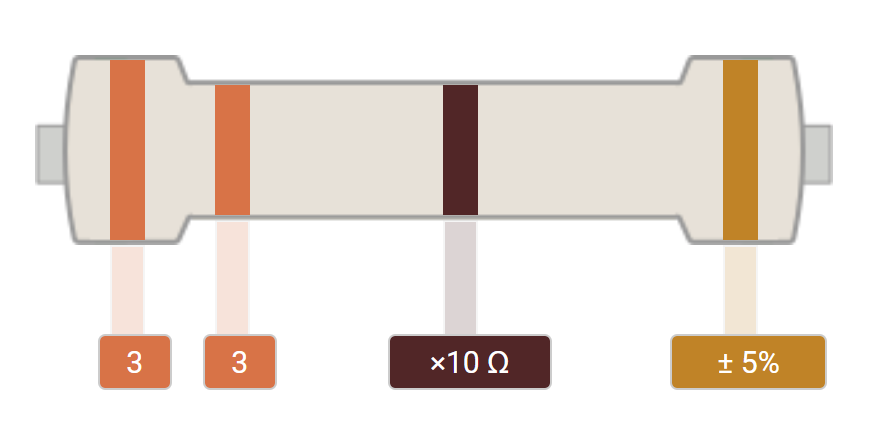
Figure 8: 4-Band 330 Ohm Resistor
Color Code: Orange, Orange, Brown, and Gold or Silver.
The first band (orange) represents the number 3.
The second band (orange) also represents the number 3.
The third band (brown) is a multiplier of 10.
The fourth band, either gold or silver, indicates the tolerance. Gold represents a tolerance of ±5%, while silver indicates ±10%.
5-Band 330 Ohm Resistor
The 5-band color code adds an extra level of precision compared to the 4-band code by including an additional digit for the resistance value. This method is used for more precise applications, as it provides three significant digits.

Figure 9: 5-Band 330 Ohm Resistor
Color Code: Orange, Orange, Black, Black, Brown or Red.
The first band (orange) represents the number 3.
The second band (orange) also represents the number 3.
The third band (black) represents the number 0, giving us 330.
The fourth band (black) is a multiplier of 1, meaning the resistance remains 330 ohms.
The fifth band, either brown or red, indicates the tolerance. Brown signifies a tolerance of ±1%, while red indicates ±2%.
6-Band 330 Ohm Resistor
The 6-band color code builds upon the 5-band system by adding a sixth band to denote the temperature coefficient. This additional information helps in understanding how the resistance may change with temperature fluctuations for sensitive or high-reliability environments.
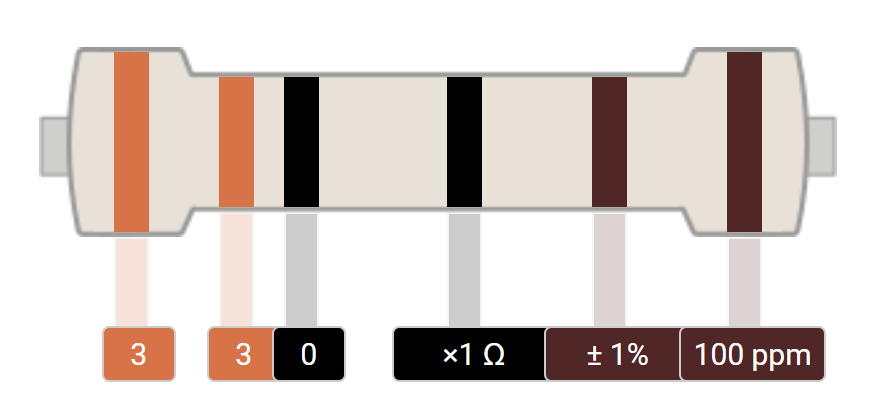
Figure 10: 6-Band 330 Ohm Resistor
Color Code: Orange, Orange, Black, Black, Brown, Brown.
The first three bands (orange, orange, black) represent the digits 330.
The fourth band (black) is a multiplier of 1, so the resistance is still 330 ohms.
The fifth band (brown) indicates a tolerance of ±1%.
The sixth band (brown) represents a temperature coefficient of 100 ppm/°C (parts per million per degree Celsius), it means the resistance could change by 100 ohms for every million ohms if the temperature shifts by 1°C.
Applications of 330 Ohm Resistors
• Current Limiting: This helps protect LEDs from too much current that can damage them or shorten their life. Using 330 ohm resistor value keeps the LEDs safe when connected to power sources like 5V or 3.3V.
• GPIO Pins: In circuits with microcontrollers, 330 ohm resistors are used to keep GPIO pins stable when they aren't being actively used and makes the signal stays steady.
• Signal Conditioning: These resistors are also used in voltage dividers to lower voltages so they match what other parts of the circuit need and ensuring everything works together properly.
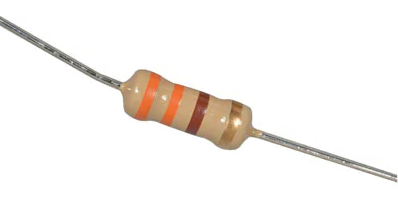
Figure 11: 330 Ohm Resistor
• Timing and Filtering: Paired with capacitors, 330 ohm resistors can smooth out voltage spikes, shape signals, or create time delays, all for signal processing.
• Transistor Biasing: In amplifier circuits, 330 ohm resistors provide the right amount of current to transistors, ensuring they work at their best.
• Calibration and Testing: These resistors can be used in test circuits as known loads, helping to calibrate tools or see how a circuit reacts under specific conditions.
• Fuse Series Resistor: When used with fuses or protective devices, 330 ohm resistors limit the initial surge of current, adding extra protection against short circuits or voltage spikes.
Conclusion
The 330 ohm resistor serve a main role in both simple and complex electronics. Its easy-to-read color bands and function in controlling signals and dividing voltage make it valuable for proper circuit operation. Following E-series standards ensures these resistors meet precise requirements for reliable use. Tolerance is important for engineers to make circuits more accurate, especially in delicate settings. As technology moves forward, knowing parts like the 330 ohm resistor is still beneficial. This article explained its color codes and standards, to emphasize its value in both modern electronics and basic engineering.
Frequently Asked Questions [FAQ]
1. How many volts is 330 ohms?
Ohms don’t specify volts, instead, they measure resistance. The voltage across a 330 ohm resistor depends on the current flowing through it, according to Ohm's Law: V=I×R . For example, with a current of 10 mA (0.01 A), the voltage across the resistor would be 0.01 A×330 ohms=3.3 V .
2. How many 330 ohm resistors in parallel are required?
The combined resistance of resistors in parallel is given by Rtotal=1/((1/R1+1/R2+⋯)) . To find out how many 330 ohm resistors are needed to achieve a desired resistance, this formula is used. For example, to achieve 110 ohms, three 330 ohm resistors in parallel would be needed.
3. What is the minimum wattage required for 330 ohm?
The wattage requirement depends on the power dissipation, calculated as P=I2×R. If a resistor carries 10 mA, then P=(0.01 A)2×330 ohms=0.033W . Typically, a 1/4 watt resistor would be sufficient as it provides a safe margin.
4. Why Use a 330 Ohm Resistor with LEDs?
A 330 ohm resistor is often used with LEDs to limit the current flowing through the LED, protecting it from excess current that could damage it. For example, with a forward voltage of 2 V for an LED and a supply voltage of 5 V, the resistor ensures that only about 9 mA flows through that is safe for most standard LEDs.
5. How do you correctly install a 330 ohm resistor?
To install a 330 ohm resistor, first identify the polarity and connections of your circuit components. Resistors aren’t polarized, so they can be connected in either direction. Solder the resistor leads to the correct points on the circuit board or twist them around the component leads if using a breadboard, ensuring a firm and stable connection without stressing the leads.
6. What is the difference between a 330 ohm resistor and a 300k resistor?
The difference is their resistance value; a 330 ohm resistor has much lower resistance compared to a 300k (300,000 ohms) resistor. This results in different current handling capabilities. A 330 ohm resistor is used for low-voltage applications like LED circuits, whereas a 300k resistor might be used in signal conditioning or sensitive electronics.
About us
ALLELCO LIMITED
Read more
Quick inquiry
Please send an inquiry, we will respond immediately.

Innovative Guide to JK Flip-Flops: Analyzing Truth Tables, Mechanisms, and Strategic Applications
on September 14th
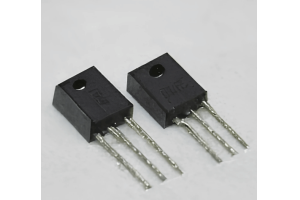
Comprehensive Guide to the C945 Transistor
on September 13th
Popular Posts
-

What is GND in the circuit?
on January 1th 3036
-

RJ-45 Connector Guide: RJ-45 Connector Color Codes, Wiring Schemes, R-J45 Applications, RJ-45 Datasheets
on January 1th 2606
-

Fiber Connector Types: SC Vs LC And LC Vs MTP
on January 1th 2162
-

Understanding Power Supply Voltages in Electronics VCC, VDD, VEE, VSS, and GND
on November 13th 2064
-

Comparison Between DB9 and RS232
on January 1th 1788
-

What Is An LR44 Battery?
Electricity, that ubiquitous force, quietly permeates every aspect of our daily lives, from trivial gadgets to life-threatening medical equipment, it plays a silent role. However, truly grasping this energy, especially how to store and efficiently output it, is no easy task. It is against this background that this article will focus on a type of coin cell battery that may seem insignificant on the...on January 1th 1754
-

Understanding the Fundamentals:Inductance Resistance, andCapacitance
In the intricate dance of electrical engineering, a trio of fundamental elements takes center stage: inductance, resistance, and capacitance. Each bears unique traits that dictate the dynamic rhythms of electronic circuits. Here, we embark on a journey to decipher the complexities of these components, to uncover their distinct roles and practical uses within the vast electrical orchestra. Inductan...on January 1th 1704
-

CR2430 Battery Comprehensive Guide: Specifications, Applications and Comparison to CR2032 Batteries
What is CR2430 battery ?Benefits of CR2430 BatteriesNormCR2430 Battery ApplicationsCR2430 EquivalentCR2430 VS CR2032Battery CR2430 SizeWhat to look for when buying the CR2430 and equivalentsData Sheet PDFFrequently Asked Questions Batteries are the heart of small electronic devices. Among the many types available, coin cells play a crucial role, commonly found in calculators, remote controls, and ...on January 1th 1640
-

What Is RF and Why Do We Use It?
Radio Frequency (RF) technology is a key part of modern wireless communication, enabling data transmission over long distances without physical connections. This article delves into the basics of RF, explaining how electromagnetic radiation (EMR) makes RF communication possible. We will explore the principles of EMR, the creation and control of RF signals, and their wide-ranging uses. The article ...on January 1th 1618
-

Comprehensive guide to hFE in transistors
Transistors are crucial components in modern electronic devices, enabling signal amplification and control. This article delves into the knowledge surrounding hFE, including how to select a transistor's hFE value, how to find hFE, and the gain of different types of transistors. Through our exploration of hFE, we gain a deeper understanding of how transistors work and their role in electronic circu...on November 13th 1561











